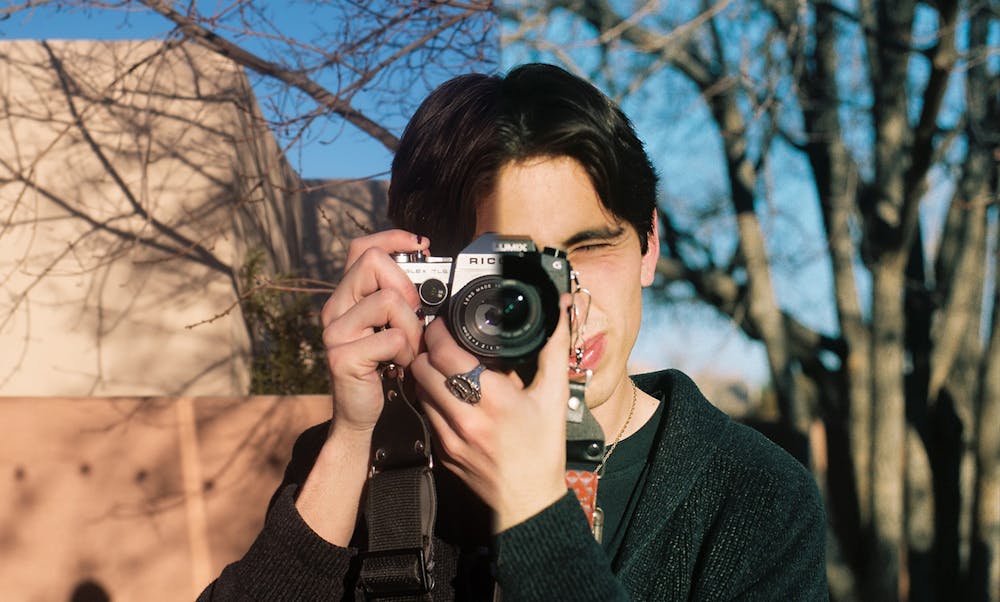As a painter must consider what paints they need to execute their latest idea, a photographer must ask themselves what medium they will choose to bring their photograph to life. Typically, this comes down to two options: digital or film?
When digital cameras first came into the consumer scene in the 1980s, professional and casual photographers alike were hesitant to make the transition due to poor image quality, according to a CNET article that tracks the history of the digital camera. It wasn’t until the development of digital single-lens reflex cameras and the invention of cell phone photography that digital became the main photographic medium.
Film photography has seen a recent resurgence, though. Sales of 35mm film cameras have increased since 2015, according to the New York Times, who credit the resurgence of film to a similar nostalgia brought on by other vintage trends like vinyl records coming back.
Patrick Manning, associate professor in the University of New Mexico Department of Art, said he sees digital as creating an image and film as a reflection of reality.
“Analog tends to lend itself to a belief in the reflection of reality ... I kind of have one strain of work which is very much highly manufactured; it’s overtly manufactured — that these could not possibly be real images. And I tend to use … digital for that,” Manning said.
Jim Stone, a distinguished professor in the art department, acknowledged the technology is different to some degree but largely sees the two mediums as being one and the same.
“Fundamentally, you’re using some kind of device to record the way that light’s reflected from the real world, so, at its base level, it’s the same,” Stone said.
Stone explained that “your ideas should lead your process,” and the medium chosen, whether it be digital or film, should be dictated by what image you are trying to capture.
“As an artist, your ideas should lead your process, not the other way around,” Stone said. “So I’m a little resistant to someone saying, ‘I’m a film photographer’ or ‘I’m a stainless steel sculptor,’ because that’s kind of a limiting statement.”
Film photography requires photos to be chemically developed, whether that be by the photographer or by a photo lab. Manning emphasized the difference in processes that go into creating film or digital images after the image has been taken and said film is a more pleasant experience for him.
“I do find working in analog, the actual work process of analog, to be more enjoyable than the work process of digital. Even though it can be just as tedious … Sitting in front of a computer is less pleasant, for me, than manual things,” Manning said.
Stone, however, said he embraces the ease of the digital process and how technology can help create a more seamless artistic process.
Get content from The Daily Lobo delivered to your inbox
“As an artist, I’ve spent 30 years or more in darkrooms. I’m not going back,” Stone said. “I think that, for the kind of work that I do, the digital system is vastly better. It’s more controllable — it does things that film didn’t do with any ease at all so I really prefer it.”
Color film lends itself to having richer and more saturated colors, according to Manning, something he said digital has yet to recreate.
“For the general public, for people who still use film, a lot of it is when they’re doing color work … They’re getting better at some of these film simulations, but it’s still not there in some ways … Some of the way in which film distorts is not being captured by the current simulations of those distortions that we have,” Manning said.
Stone cited the “magic” of the film development process as being part of the reason why people have begun to flock back to film photography.
“You’d put a white piece of paper in a liquid and pretty soon a picture shows up. And that’s pretty exciting,” Stone said.
John Scott is the managing editor at the Daily Lobo. He can be contacted at managingeditor@dailylobo.com or on Twitter @JScott050901






